Google Pixel Watch 3 vs. Samsung Galaxy Watch Ultra: Different takes, same goal
These are two fitness-focused watches, each with a valid approach to targeting athletes, but only one will probably appeal to you.
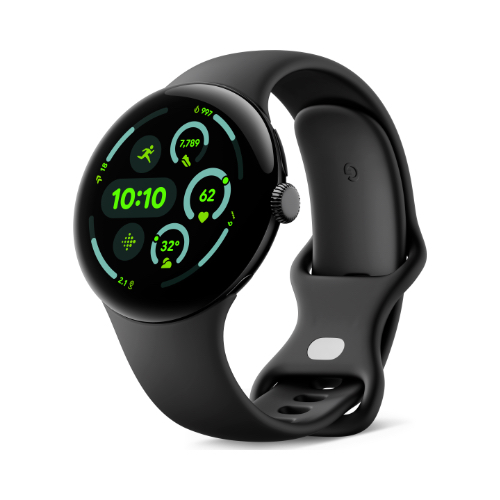
Casual quality
The Google Pixel Watch 3 doesn't really stray all that far from past Pixel Watches' template, aside from some overdue updates to the display. Google focused more on making Fitbit more useful and adding some cute Android integration. It's almost the polar opposite to the Galaxy Watch Ultra, and it'll save you some money.
For
- Comes in two comfortable sizes
- Brighter, smoother display than Watch 2
- More affordable price
- Tactile crown controls
- cEDA and loss of pulse alerts
- Fitbit training load insights
Against
- Only hits 24 hours with AOD
- Less rugged and probably needs a screen protector
- Shorter software support
- Expensive LTE add-on
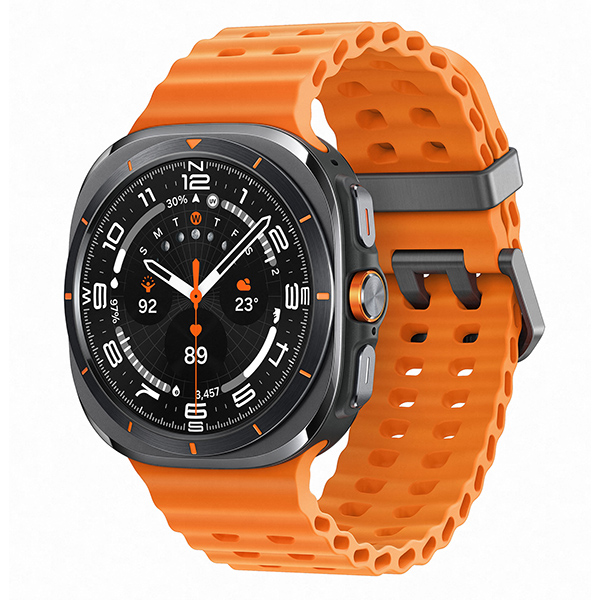
Hardcore and heavy
The Galaxy Watch Ultra delivers perks like better GPS accuracy, extra heart rate LEDs, a brighter display, and longer software support. But people used to typical smartwatches won't miss upgrades they've never had before, and not everyone will want to spend so much on a smartwatch, no matter how durable and long-lasting it is.
For
- Larger, brighter display
- Military-grade durability with sapphire glass
- 2.5x the battery life
- Built-in LTE and siren
- Dual-band GPS and tons of HR LEDs
- Four years of Wear OS updates
Against
- Very expensive for a smartwatch
- No small-display option
- No long-term training load
- No crown or physical bezel
Google doesn't sell a premium equivalent to the Samsung Galaxy Watch Ultra, but if you buy the 45mm Google Pixel Watch 3 LTE, the price jumps to $499 — just $150 less than the Ultra. That gap is small enough that many of you will consider upselling yourselves to the Ultra, or cutting back to the Pixel Watch while keeping cellular support.
Both of these watches are, essentially, fitness watches. The Galaxy Watch Ultra's upgrades are meant to help it survive in rugged conditions and give you better HR and GPS data while you train. The Pixel Watch 3 isn't built for roughing it, but its Premium workouts and new cardio load score tailor it towards indoor and outdoor athletes.
This Pixel Watch 3 vs. Galaxy Watch Ultra guide will break down every key upgrade Samsung's fancy flagship watch offers, while also exploring where Google's cheaper watch comes ahead. Both rank among our favorite Android watches, but the Galaxy Watch Ultra appeals with its durability and longevity, while the Pixel Watch 3 provides better comfort and unique software perks.
Google Pixel Watch 3 vs. Samsung Galaxy Watch Ultra: Design

The Galaxy Watch Ultra is a massive, thick smartwatch with a striking titanium bezel surrounding the display, only available in one 47mm case size. The Pixel Watch 3 has 41mm and 44mm options, both of which have edge-to-edge displays that round off on the sides, making it more casually sleek and much less rugged.
Although Samsung's spec sheet falsely claims the Ultra measures slightly thinner than the Watch 3, it actually measures about 16mm thick once you include the sensor array, while Google's watch is about 3–4mm thinner.
Although the Galaxy Watch Ultra case by itself is nearly half as large as the 41mm Pixel Watch 3, each watch's true weight will vary based on which band material and size you choose. The 41mm Pixel Watch 3 — the same size as the Watch 2 — should weigh 55g with the smaller Active band or 63g with the larger band; the 45mm Watch 3 would weigh 61g or 69g, in theory. The Galaxy Watch Ultra with the Marine Band, which has a similar elastomer material, weighs 93g.
Both watches use a proprietary band system. Samsung has you slide and click bands directly into the slot, or press a small button on either bottom side to release them; Google uses a snap-and-tuck method that takes a little more getting used to, and releasing the bands with the side button is more finicky. Of the two, Samsung's is a bit easier to manage if you like to change out straps frequently.
Your old Pixel Watch 1 or 2 bands are compatible with the 41mm Pixel Watch 3, but not the 45mm Pixel Watch 3. The 47mm Galaxy Watch Ultra also requires its own standalone bands, as it isn't compatible with Watch 7 bands.
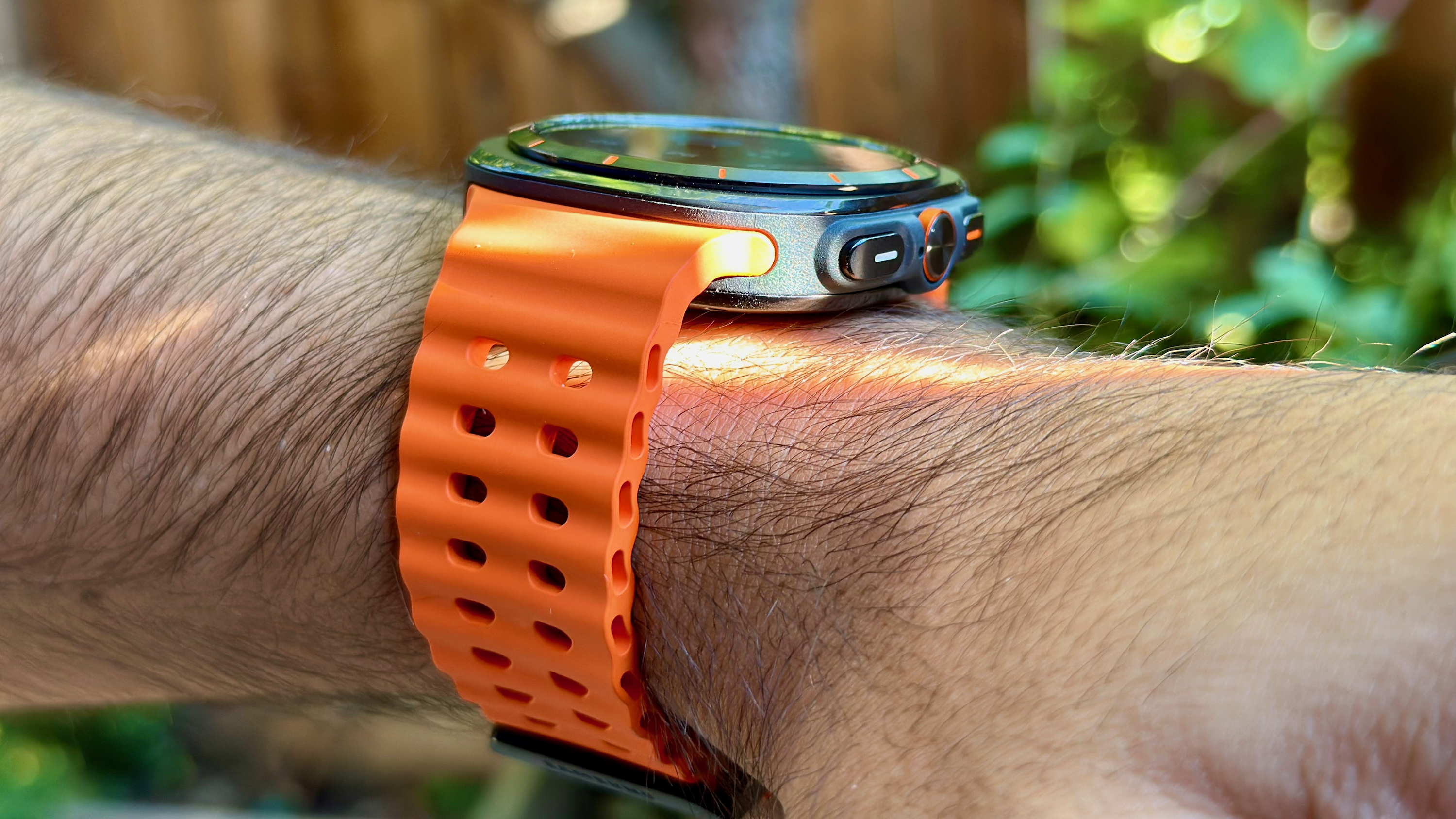
Google originally used stainless steel for the Pixel Watch but swapped to a less-premium aluminum for the Pixel Watch 2 and Watch 3. While it's IP68 dust- and water-resistant like most smartwatches, the Watch 3 has no official rating to handle shocks and drops. Its Gorilla Glass 5 protection isn't as strong as the sapphire glass you get on many watches, and the design itself leaves the side glass vulnerable if you bonk your wrist against something. You may want a dedicated screen protector.
With the Galaxy Watch Ultra, you have an elevated titanium bezel that prevents scratches against flat surfaces and a sapphire-glass layer as a backup. Samsung had the Ultra pass MIL-STD-810H tests for "high/ low temperatures, altitude, humidity, immersion, salt, fog, dust, vibration, and drops." Its 10ATM rating is double the Pixel Watch 3's 5ATM rating, making it better suited for high-speed water sports.
The Galaxy Watch Ultra will appeal to fans of large, rugged watches like the Garmin Fenix or Amazfit T-Rex series, but may intimidate people with smaller wrists. We wish it came in a smaller display size, as the Pixel Watch 3 does.

The Google Pixel Watch 3 has a crown and a secondary button. The crown is unchanged from past models, and while many people prefer crowns for tactile, exact controls, others dislike relying on them.
Your alternative with the Galaxy Watch Ultra is its digital touch "bezel" around the display edge; if you slide your finger along it, you'll scroll through tiles or menus quickly, without any swipes or finger-twisting required. It's useful in normal settings but can be a bit inexact, especially on the go or with sweaty fingertips during a workout. Many people prefer the Galaxy Watch 6 Classic for its physical rotating bezel, but the Ultra's digital bezel prevents it from getting any heavier.
Instead, the Galaxy Watch Ultra gives you three buttons, one more than the standard Watch 7. We wish the middle Quick Button was a crown, but it does at least give you an easy shortcut to pause or restart workouts, or to trigger the emergency siren.
Google Pixel Watch 3 vs. Samsung Galaxy Watch Ultra: Display
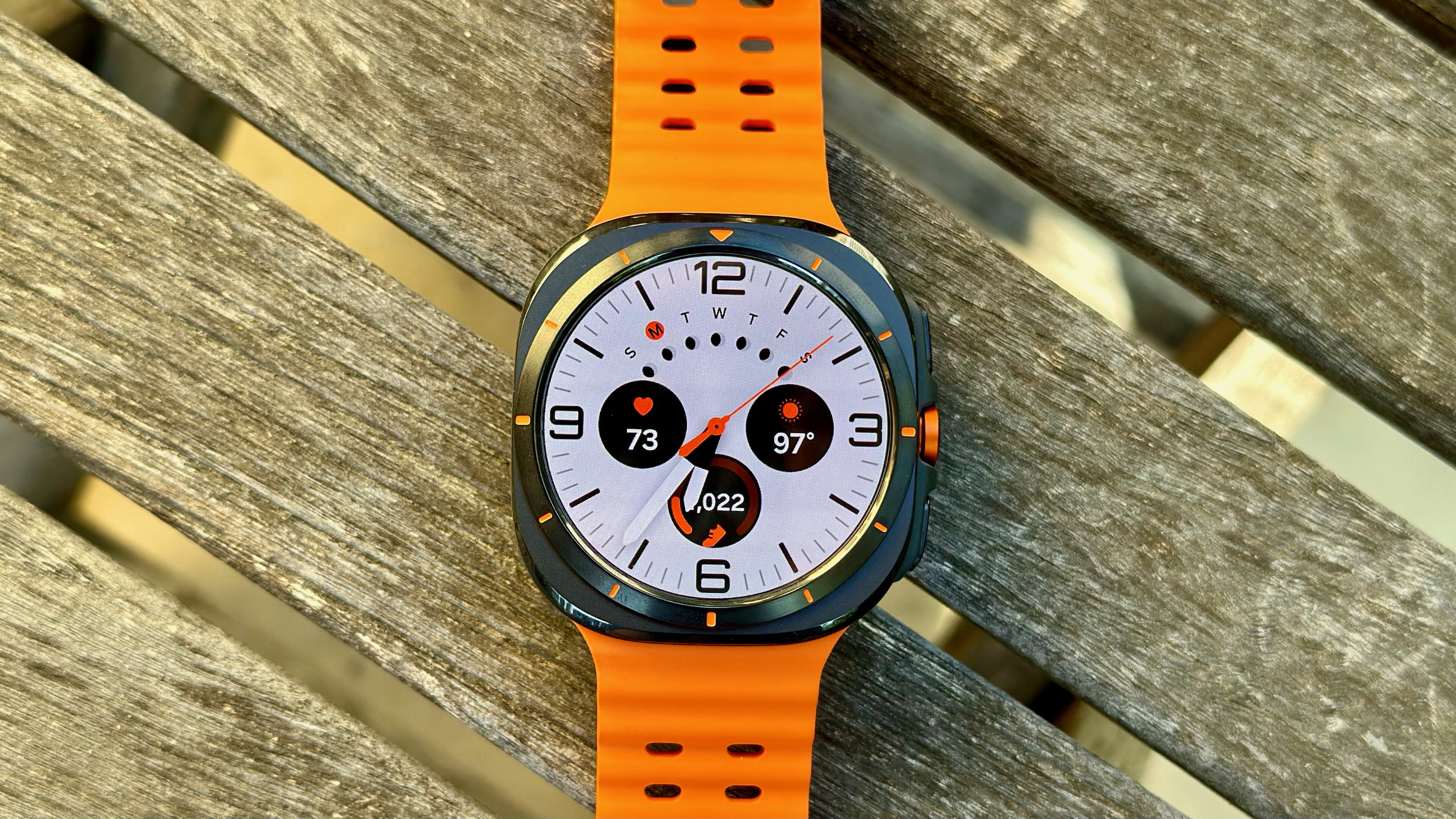
One of the biggest Pixel Watch 3 vs. 2 upgrades is to its display. Google shrunk the thick display border, doubled the nits of brightness from 1,000 to 2,000, and gave the Watch 3 a 60Hz refresh rate that can dip as low as 1Hz to save battery life in specific instances. Depending on the case size, you get a 1.2-inch or 1.4-inch display with about 320 pixels per inch.
Despite these upgrades, the Samsung Galaxy Watch Ultra display still wins for size (1.5 inches) and brightness (3,000 nits). It also reportedly has a 60Hz refresh rate, though Samsung doesn't advertise whether it can dip as low as Google's LTPO tech, and a similar 320ppi. The biggest downside, of course, is how big it is: You won't find a secondary 1.3-inch option, like you get with the Galaxy Watch 7.
Google Pixel Watch 3 vs. Samsung Galaxy Watch Ultra: Hardware and battery life
Google uses the Qualcomm-made, 4nm Snapdragon Wear 5100, which has four Arm Cortex-A53 cores clocked at 1.7GHz, plus its own Cortex M33 coprocessor. It's a common CPU for many Android watches besides the Pixel Watch 3, including the TicWatch Pro 5 and OnePlus Watch 2.
Samsung gave the Watch Ultra its own 3nm Exynos W1000 chip, which has four Arm Cortex-A55s (1.5GHz) and one Cortex-A78 (1.6GHz). It's difficult to say if Samsung's chip is better or worse. The Exynos W1000 can't hit the same speeds, but 3nm chips are generally more power-efficient, the Cortex-A55 is the next-gen core after the A53, and it has one extra core to better spread tasks around.
Generally speaking, you won't find too much of a performance difference between the two, especially since both have 2GB of RAM. They also share the same 32GB of storage for apps and playlists.
| Specs | Google Pixel Watch 3 | Samsung Galaxy Watch Ultra |
|---|---|---|
| Colors | Matte Black, Polished Silver, Champagne Gold (41mm), Matte Hazel (45mm) | Titanium Sliver, Titanium Gray, Titanium White |
| Materials | Recycled aluminum | Titanium Grade 4 |
| Band | Active (fluoroelastomer) | Marine (fluoroelastomer), Trail (nylon), Peakform (rubber) |
| Dimensions | 41 x 41 x 12.3mm / 45 x 45 x 12.3mm | 47.1 x 47.4 x 12.1mm* |
| Weight (w/out band) | 31g / 37g | 60.5g |
| Protection | Corning Gorilla Glass 5, 5ATM, IP68 | 5ATM + IP68, MIL-STD-810H, Sapphire Glass |
| Display | 1.2-inch (384x384) or 1.4-inch (450x450) Actua AMOLED LTPO display | 1.5-inch (480x480) Super AMOLED |
| Row 7 - Cell 0 | 2,000 nits, 60Hz refresh rate | 3,000 nits, 60Hz refresh rate |
| Connectivity | Bluetooth 5.3, Wi-Fi 2.4/5GHz, NFC, UWB, LTE (upgrade), GPS, Galileo, Glonass, (ROW) Beidou, QZSS, Navic | LTE, Bluetooth 5.3, WiFi 2.4/5GHz, NFC, GPS (L1+L5), Glonass, Beidou, Galileo |
| Sensors | Multi-path optical HR sensor, red & IR sensors for SpO2, multipurpose electrical (ECG), electrical skin conductance for body response (cEDA), skin temperature, accelerometer, altimeter, ambient light, barometer, compass, gyroscope, magnetometer | Samsung BioActive Sensor (Optical Heart Rate + Electrical Heart Signal + Bioelectrical Impedance Analysis), Temperature Sensor, Accelerometer, Barometer, Gyro Sensor, Geomagnetic Sensor, Light Sensor |
| Battery | 306mAh/420mAh, 24 hours with AOD, 36 hours with Battery Saver | 590mAh, 60 hours with AOD, 100 hours with Battery Saver |
| Charging | 41mm: 24 minutes to 50%, 35 minutes to 80%, 60 minutes to 100%; 45mm: 28 minutes to 50%, 50 minutes to 80%, 80 minutes to 100% | 2 hours to 100% |
| CPU | Snapdragon W5 Gen 1 (1.7GHz), Cortex M33 co-processor | Exynos W1000 (1.6GHz) |
| Memory / Storage | 2GB + 32GB | 2GB + 32GB |
| OS | Wear OS 5 (3 years of updates) | Wear OS 5 (4 years of updates) |
Both watches support the same Bluetooth and Wi-Fi standards, along with NFC contactless payments — though the Galaxy Watch Ultra supports both Samsung and Google Wallet.
The Galaxy Watch Ultra comes with built-in LTE, while the Pixel Watch 3 makes you pay $100 extra for it in either size. Google bundles in two years of free cellular data through Google Fi, though you only get a paltry 500MB of data before the download speed is capped. For things like phone-free calling and unlimited music streaming, you'll need to add the Watch 3 to your phone carrier plan.
One unique perk of the Pixel Watch 3 is its ultra-wideband (UWB) support, which enables the Watch Unlock feature and lets you use the watch as a digital car key (depending on which car you own).
With the Galaxy Watch Ultra, you get the benefit of dual-band GPS tracking, which triangulates your position using both L1 and L5 satellite frequencies. Having reviewed the Ultra's accuracy myself, it does extremely well, on par with a dual-band Garmin watch. We've yet to test the Pixel Watch 3's accuracy, but any GPS-only watch will struggle if the signal is blocked by buildings, foliage, or other obstacles.
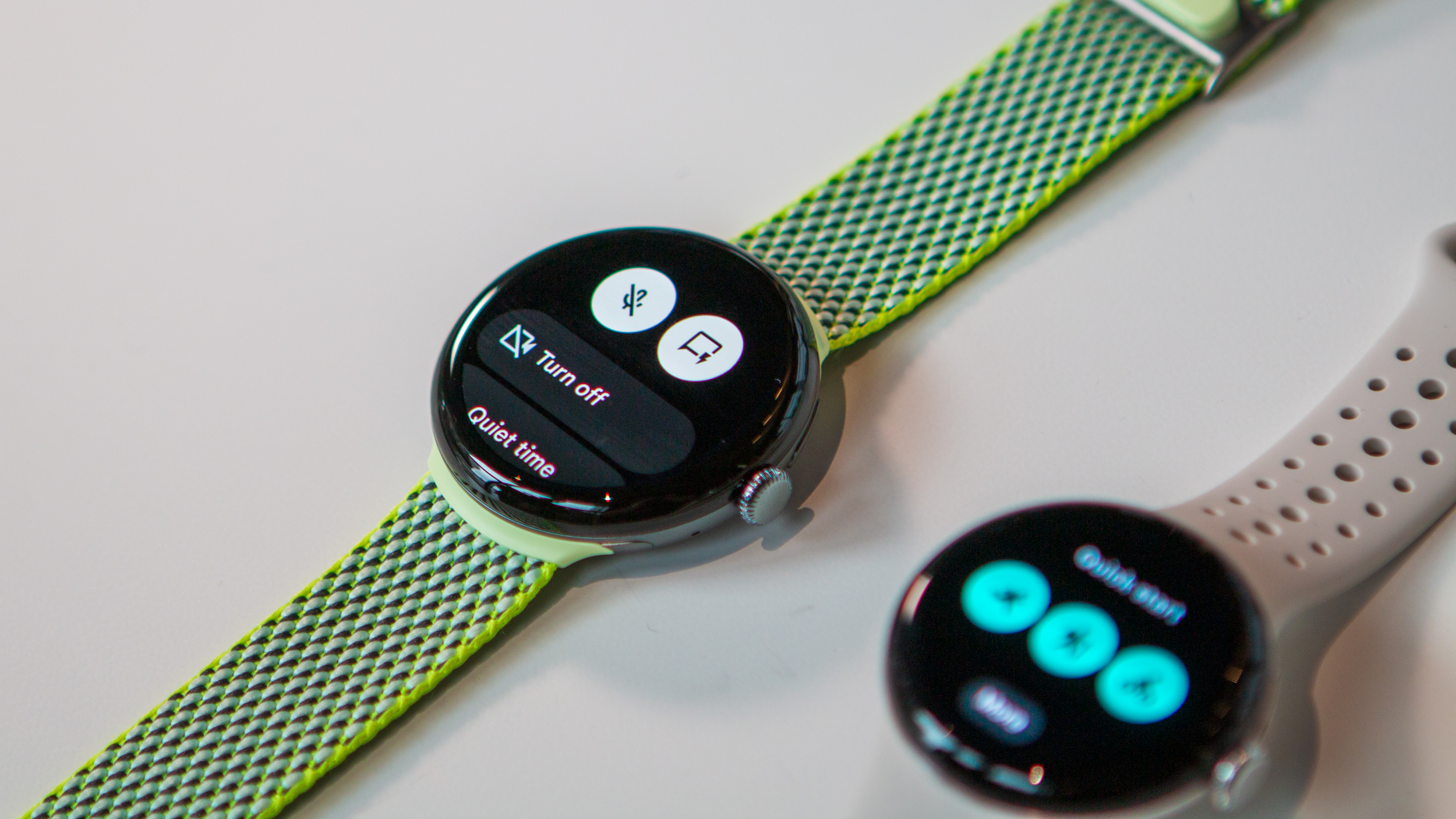
The main Galaxy Watch Ultra upside over the Pixel Watch 3 is its battery life. It's rated to last 60 hours with the always-on display (AOD) active, while the Pixel Watch 3 only has a 24-hour estimate in the same conditions. That's 2.5x the battery life.
We'll have to test the Pixel Watch 3's longevity for ourselves, but you're assured of having to charge it once a day, or more frequently if you use functions like always-listening Google Assistant or daily GPS tracking. We've heard suggestions that the 45mm Watch 3 might last slightly longer because of its extra capacity, but we can't be certain of this.
With the Galaxy Watch Ultra, we've tested its longevity for ourselves; it had battery drain issues at launch that made it unreliably short-lived, but a post-launch update fixed this issue, and now it consistently matches or beats Samsung's 60-hour estimate. You'll have much more peace of mind knowing that it likely won't die on you while out and about.
As for charging speed, the Galaxy Watch Ultra has about the same speed as the Pixel Watch 3, but it still takes 1.5x to 2x as long because it has so much extra capacity. You'll have your Pixel Watch 3 topped off in an hour or so, while the Galaxy Watch Ultra usually needs two hours.
Google Pixel Watch 3 vs. Samsung Galaxy Watch Ultra: Health sensors
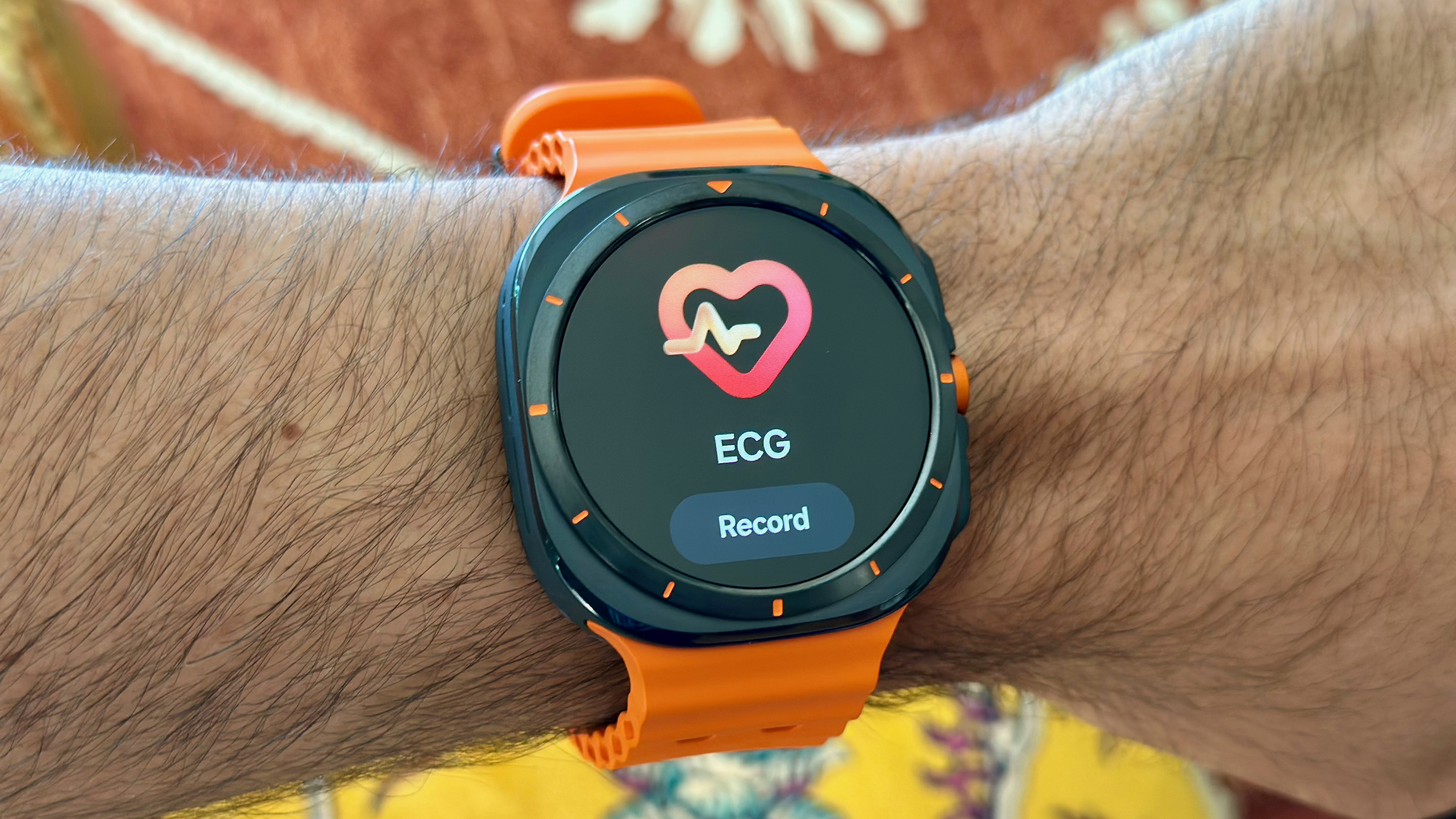
Both watches track your heart rate and stress continuously, along with passive irregular heart rhythm (AFib) and high/low HR warnings. At night, they'll detect your blood oxygen levels, breathing rate, skin temperature, sleep duration and stages, and nightly energy recovery. You can also actively check for heart health issues with the ECG function.
Google and Samsung both promise that the Pixel Watch 3 and Galaxy Watch Ultra are their most accurate watches yet for heart rate. The Pixel Watch 3 has the same HR sensor as before, but with a new algorithm to better convert readings into correct data while running. We'll have to test this claim for ourselves, of course. The Galaxy Watch Ultra adds an extra nine LEDs compared to past Galaxy Watches (13 total), and it did better in our heart rate accuracy test compared to the Galaxy Watch 6.
In terms of unique functions, the Pixel Watch 3 has an electrical sensor to measure skin conductance (cEDA) for body response tracking; in other words, it determines your body's stress during the day and your recovery at night. Most watches use heart rate variability (HRV) to determine this, but this Fitbit tech claims to be more exact.
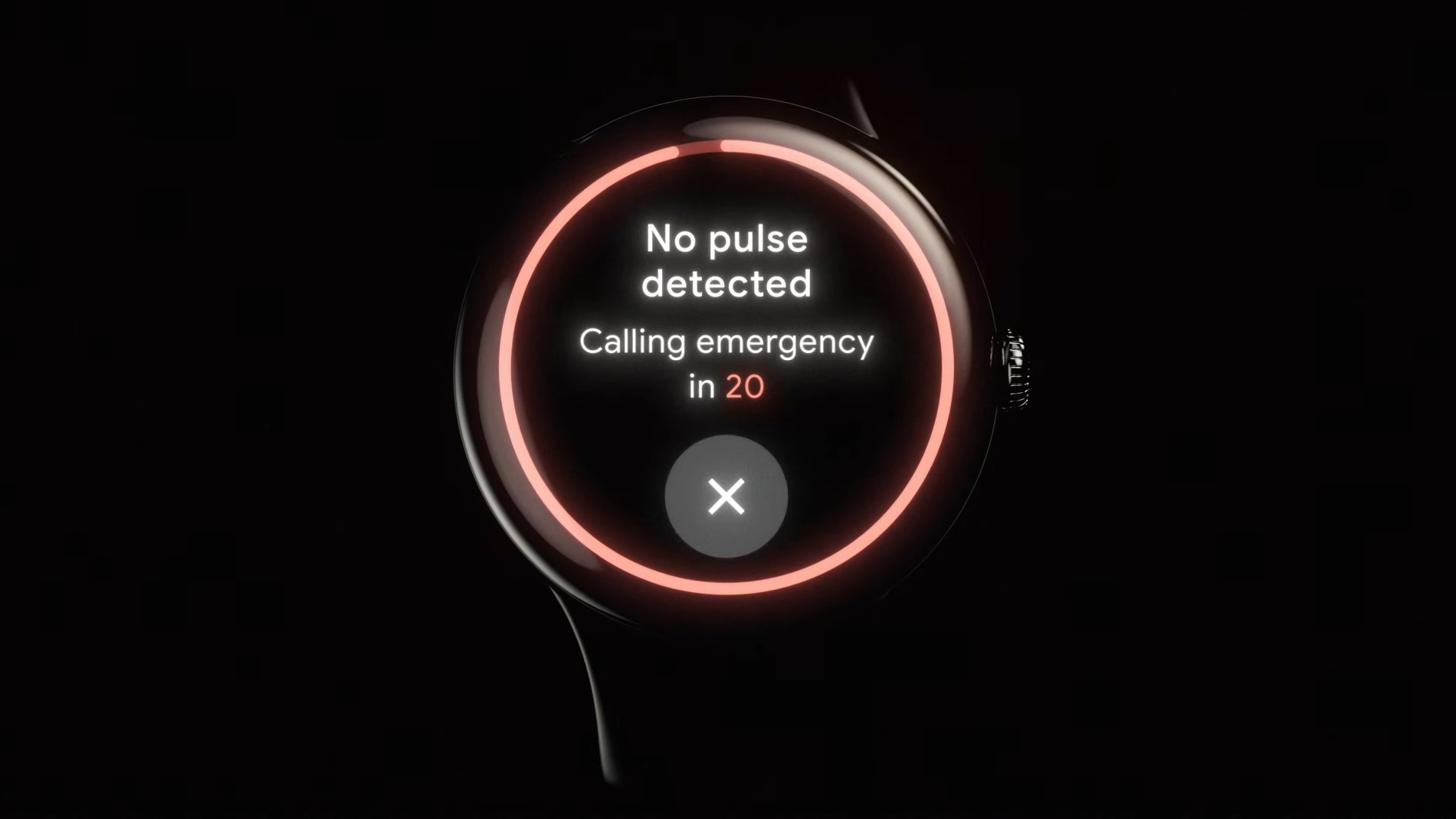
Also, Google has a new Loss of Pulse Detection feature to detect cardiac arrest and automatically call 911 if needed. We certainly can't test this, but like having this as a safety measure.
Samsung has its unique Bioelectrical Impedance Analysis (BIA), which imitates a smart scale by sending electrical signals through your body to estimate your body fat and muscle percentages. It is useful, in theory, but we've found the readings to be unreliable compared to smart scale data in our tests.
Plus, Samsung's redesigned health sensor suite has new LED colors meant to track new data like your advanced glycation end products (AGEs) index, aka products in your bloodstream that signal health problems. Unfortunately, this AGEs Index feature appears to give every user the same high-AGE score, making it useless as a biomarker. We hope this is something Samsung will improve over time.
Google Pixel Watch 3 vs. Samsung Galaxy Watch Ultra: Software

The Galaxy Watch Ultra will receive four years of Wear OS version updates and four years of security updates. We didn't see a specific software promise with the Pixel Watch 3, but Google has previously promised three years of software support for Pixel Watches.
Either watch nets you access to new Wear OS 5 features, though Samsung has its own One UI 6 Watch skin on top of Wear OS 5. Google gave the Pixel Watch 3 unique app tools like Google TV controls, Nest Doorbell live feeds on your watch, and a Pixel Recorder app; some features will be Pixel exclusive, but others may come to the Galaxy Watch Ultra later.
The Pixel Watch 3 relies on Fitbit for your health and fitness data, while the Galaxy Watch Ultra uses Samsung Health. Samsung added a new daily Energy Score that's quite similar to Fitbit's Daily Readiness Score, using the same collected data.
Fitbit charges a Premium fee for certain wellness reports and AI insights, but gives you data like your Cardio Load and Target Load for free, judging how hard you've worked out across multiple workouts and whether you've trained enough to improve your fitness level over time. Samsung's fitness data doesn't have any long-term analysis at the moment, though you can export it to other apps like Strava to get this.
Google Pixel Watch 3 vs. Samsung Galaxy Watch Ultra: Which should you buy?
As we said from the outset, these are two fitness watches that take different approaches towards the same goal. Some athletes will prefer the Ultra for the assurance it'll never die during a workout; others will want a watch that's skinnier and lighter while weight training or running.
We gave the Galaxy Watch Ultra a glowing review, and are impressed with the Pixel Watch 3 thus far, so both should give you a high level of quality. The Pixel Watch 3 is much more accessible due to its price, however. It's harder to recommend the Galaxy Watch Ultra unless you have a real need for military-grade durability, better GPS tracking, or longer battery life than the Pixel Watch 3 can give.

Casual quality
Choose the Pixel Watch 3 if you want a fitness-focused Android watch that's more comfortable and affordable than the Ultra. Skip it if you dislike having to charge your watch every day.

Hardcore and heavy
Choose the Galaxy Watch Ultra if you're attracted to its design and battery life, and have no qualms about a heavier smartwatch. Skip it if you're on a budget or want unique Fitbit insights like training load.
Be an expert in 5 minutes
Get the latest news from Android Central, your trusted companion in the world of Android

Michael is Android Central's resident expert on wearables and fitness. Before joining Android Central, he freelanced for years at Techradar, Wareable, Windows Central, and Digital Trends. Channeling his love of running, he established himself as an expert on fitness watches, testing and reviewing models from Garmin, Fitbit, Samsung, Apple, COROS, Polar, Amazfit, Suunto, and more.
You must confirm your public display name before commenting
Please logout and then login again, you will then be prompted to enter your display name.
